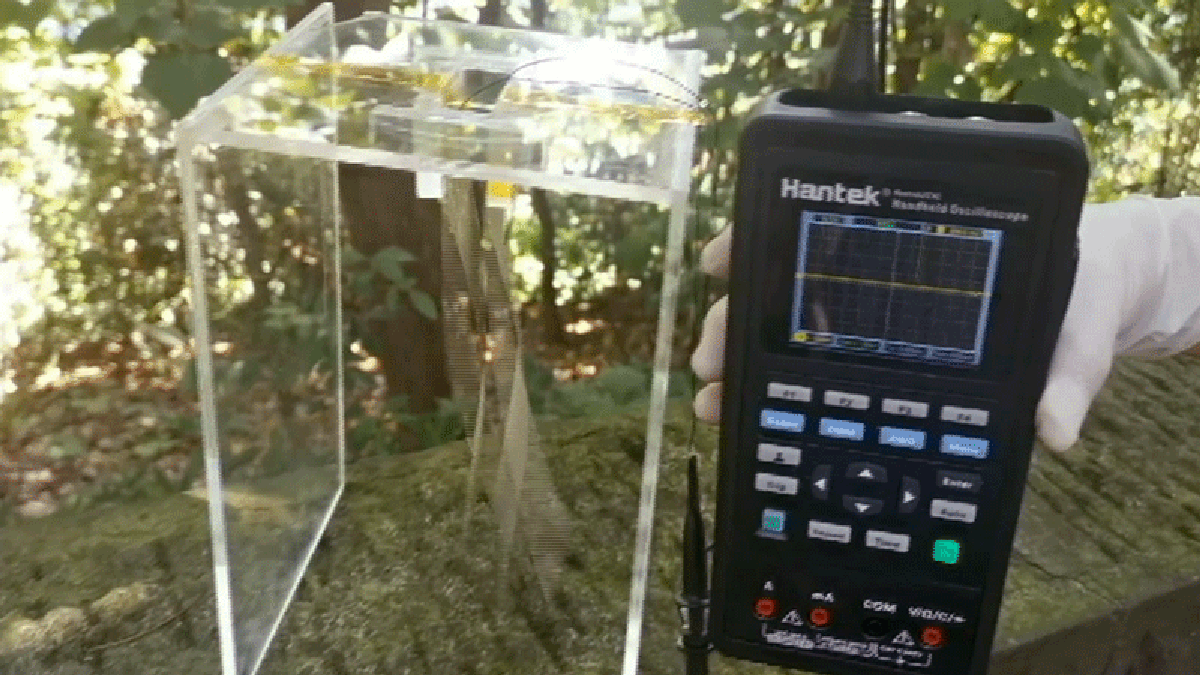Scientists Have Figured Out How to Capture Energy From a Gentle Breeze

The crackling sound you hear as you separate two socks fresh out of the dryer are the result of the triboelectric effect generating static electricity. It can occasionally lead to an unpleasant shock, but researchers from the Beijing Institute of Nanoenergy and Nanosystems are leveraging the effect to create a power-generating wind turbine that works with just the slightest breeze.
Advertisement
The towering wind turbines you often see dotting the countryside are very effective at capturing the wind and converting it to electricity for powering cities. But not only are they expensive to build and install, they also require a certain amount of wind speed to function, which is why their massive blades are perched so high in the air. The gentle breezes you feel when you step outside aren’t enough to power a traditional wind turbine design, so the researchers came up with a new and completely different design to capture energy from the gentlest of breezes.
The spinning blades of a windmill work by simply turning a generator inside to produce electricity, but this triboelectric nanogenerator, also known as the B-TENG, trades three blades for a pair of thin plastic films that are free to flap and flutter in the wind. As the strips repeatedly make contact and then pull apart from each other, small charges are generated through the triboelectric effect. A breeze as slow as 3.6 mph (15.8 kph) is all that’s needed to produce a usable amount of energy, although the researchers have found that wind speeds between 8.9 to 17.9 mph (14 to 28.8 kph) worked best as it causes the thin strips to flutter and flap in sync, increasing the contact between them.
Advertisement
If you’re thinking a quick walk around the block with the B-TENG attached to your swinging arm is enough to give your dying smartphone a small top-up, think again. Towering wind turbines have a wind-to-energy conversion efficiency upwards of 45%, but this new device musters just 3.23%. In laboratory tests with the ideal wind speed maintained at a constant flow, the researchers were only able to generate enough power to occasionally light up a grid of 100 LEDs in quick flashes, or operate a simple, low-power temperature sensor.
G/O Media may get a commission
The device currently serves as a proof-of-concept that the technology can work, but there’s lots of work to be done before it’s something that could be used in real-world conditions. The thin plastic strips are fragile, and it remains to be seen how well they’ll perform when wet, or dirty, or if one happens to get accidentally creased or folded. There are a lot of improvements needed before the B-TENG is realized as a device that will function just as well outside the lab, but it demonstrates that scavenging energy from even the slightest breezes could one day be a practical alternative source of energy. We’re going to need all the solutions to clean up the grid we can get.
tinyurlis.gdv.gdv.htclck.ruulvis.netshrtco.detny.im
